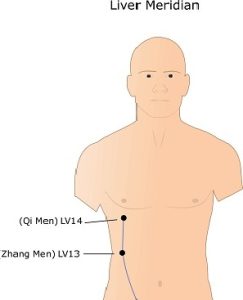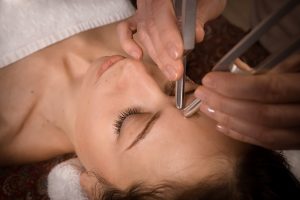-
- Take your health to the next level. Subscribe to our mailing list for your FREE eBook.“5 Ways to End Chronic Pain for Good!”

-
Latest Articles:
- • Add These 10 Immune-Boosting Foods to Your Fall Diet •
- • Keep Your Skin Healthy and Glowing with these Fall Skincare Tips •
- • Beat End of Year Burnout with these Fall Self-Care Rituals •
Hours
Monday8:30am - 4:30pmTuesday8:30am-4:30pmWednesday8:30am-4:30pmThursday8:30am-4:30pm
- Testimonials
“Dr Michele knows how to diagnose and heal you. She has a variety of methods she can utilize to work with your mind and body to produce the healthiest you!”
~ Carol Prokop. Also posted on Google Reviews!
I needed relief from chronic pain in my back, hips, and sciatic nerve. I have had these problems for a number of years. My doctors used physical therapy, and pain medication. I can no longer take anti-inflammatory medication. My acupuncture treatments have helped a lot. I can now relax, and I feel almost pain free. It has helped my attitude also. My activities have improved. Michele is a wonderful person, caring, compassionate, and an excellent acupuncture therapist!
C.T.
After two back surgeries, I was still having a great deal of pain. A friend told me acupuncture helped him with shoulder pain. I was a little skeptical but decided to give it a try. I didn’t want to stay on Percocet pain killers forever. After receiving acupuncture treatments, I was amazed how it helped with the pain. It isn’t gone but it is at least bearable. I only occasionally need to take a pain killer, and that is when
... Read more »A letter as copied to her doctor: Ms. Michele Arnold has been working with me since I begun experiencing hot flashes and has been able to manage them for me. I know it works because I took a five week hiatus from acupuncture treatments and experienced hot flashes so severe that I actually did not want to live. With four treatments I was back to feeling great with only a very occasional minimal hot flash. Acupuncture is relaxing and uplifting.
... Read more »Acupuncture has helped relieve so many symptoms, its hard to list them all. I have MS (multiple sclerosis) and acupuncture has helped with my vision, balance, and overall energy level. It also completely addressed the pain from a torn shoulder rotator cuff. Thank you Michele!
Wendy Harrison
Stress & Anxiety
Your Gallbladder is important even if you don’t have one! Listen to the podcast.

The gallbladder is the lymphatic channel responsible for digestion of fats. It is also responsible for carrying out plans and decisions.
Listen to this podcast to hear why it is important to stimulate your gallbladder channel.
The books I mention in this podcast can be found on lulu.com/shop or Amazon.
“Ancient Healing for Modern People“, and “It’s All About Your Gut!” by Michele Arnold-Pirtle
Join the live or recorded Chakra Series class to stimulate the gallbladder meridian with acupressure points and sound healing.
Tips to stimulate poor appetite when recovering from surgery, chemo, or illness using natural methods
Watch my video where I share with you some ideas about what foods can help along with using aromatherapy and acupressure.
Using Acupressure for Future Hope and Happiness in 2022
Each new year we look forward to a new beginning. To a brighter future. Many of us will make New Year’s resolutions to start the new year in the right direction. Our intentions are to make up for any mistakes we made during the previous year in hopes not to repeat them. We also aim to put into action those things we have put on the back burner by procrastinating. By learning from our mistakes, setting goals, organizing, planning, and putting those steps into action we will experience personal growth. This may be on an emotional-mental level, physical level, or more spiritual.
- Many of us would like to see ourselves improve our relationships
- Feel good, and be healthier
- Become more physically fit, and lose weight
- Be a better person by being more thoughtful, conscientious, generous, patient, and understanding.
- Maybe we would like to excel in school, or to succeed in our career.
- We would like to enjoy financial abundance and freedom
- Perhaps there are hobbies to try, or places we want to see.
In a nutshell, let us give thanks for what we have had this past year while looking forward to the future.
There are ways you can help yourself do just that. Acupressure is one of the ways to help yourself on an emotional-spiritual level.
There are two acupuncture points that I would like to share with you.

- Liver #13 called Chapter Gate (Zhang Men). This is located below the tip of the 11th rib. Think of it like a gate opening up, or the turning of a page in a book to a new chapter. It helps recycle the old stuff enabling a new transition in life. It allows you to breath as it benefits the diaphragm, and ribcage. If your mind feels stuck, this is a great point to activate.
- Liver #14 called Gate of Hope (Qi Men). It is located on the inferior ridge of intercostal angle about 4″ lateral from center, and 3.5″ below the tip of zyphoid process. *This is an alternative location used in Classical Five-Element Acupuncture. Use this point when you feel resigned, like you want to give up. When you are feeling like there is no growth, no fulfillment use this point. It brings hope for the future. It opens up the consent to healing, and to getting well. It empowers the quality of aspiration.
Together these acupuncture points will help change your perspective when needed, and will bring the feeling of hope, and growth needed for a new beginning and for a bright future.
Rub each point in a clockwise direction for up to a minute each. Then gently tap 5 times up and down.
Rub each point twice daily in the morning, and before bed.
Happy New Year 2022!
Dr. Michele Arnold
Acupuncture Center Inc. Local acupuncture clinic in Poway, CA for pain relief, anti-anxiety, and stress reduction
Living Well with Dr. Michele-A Holistic Health and Wellness Community for posting questions, comments, experiences, learning, live-streaming classes, health tips, and exclusive content.
www.livingwellwithdrmichele.locals.com
Well With Dr. Michele-Online holistic, on-demand courses for digestive, and spiritual health.
Get Rid of Chronic Pain by Changing What You Think!
Do you suffer from any type of chronic pain, illness, anxiety, or depression? Have you tried everything without success? Would you like to get rid of it for once and for all?
In my video, “Getting Rid of Chronic Pain by Changing What You Think”, I explain that the root of the problem in your physical body begins in your mind, and your thoughts.
What are you constantly telling yourself? Most likely you are not even aware of it!
You have the power to heal yourself by facing your inner fears and personal conflicts.
Watch the video to learn how your thoughts affect your physical body.
Sign-Up for the Chakra Series Classes and my Holistic Health Community Now!
Best in Health,
Dr. Michele Arnold


